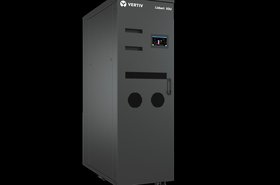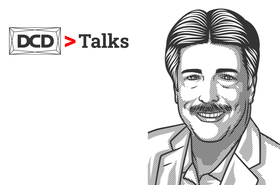Each year, Vertiv experts come together to examine the top global trends affecting the data center industry in the year ahead.
Specifically, we look at the intersection of global issues, such as the continued push toward sustainable practices, with the drive towards greater efficiencies within our industry.
With a focus on meeting the needs of our customers, I am pleased to share the five top trends Vertiv experts identified for 2023 in our annual forecast.
More aggressive regulatory oversight
Data centers enable a vast number of connections around the globe, but it comes at an environmental cost.
A typical data center using evaporative cooling can consume 3-5 gallons of water per day – enough to service a small city of up to 50,000 people. Imagine, a large data center can consume enough water daily to fill a 10-foot-deep swimming pool the size of a professional soccer field.
We expect government regulators around the world to expand their scrutiny of growing energy and water consumption by data centers in 2023, especially as they relate to grid capacity challenges, the global climate crisis, and rising energy costs.
Accordingly, data center operators will sharpen their focus on sustainability and efficiency against the backdrop of compute-hungry applications and technologies that demand more energy.
Expect data center operators to focus on high-efficiency UPS systems and the increased adoption of lithium-ion batteries and water-free cooling.
Higher densities call for new thermal strategies
According to the Uptime Institute's 2022 Global Data Center Survey, more than a third of data center operators say their rack densities have rapidly increased in the past three years.
With rack densities on the cusp of exceeding 30 kilowatts (kW), now is the time to reassess the ability of air-cooling systems to sufficiently cool high-density racks. Organizations confronted with the challenges of increasing rack densities must consider cooling alternatives that better address their needs or risk reduced performance, higher energy costs, and delayed implementations.
Liquid cooling has become one of the most viable alternatives to air cooling because it leverages the higher thermal transfer properties of water or other fluids to support efficient and cost-effective cooling of high-density racks. In fact, it can be up to 3,000 times more effective than using air.
While liquid cooling may be years away from mainstream adoption, the early wave of successful, efficient, problem-free deployments in high-density environments has provided proof of concept that will boost adoption in high-density racks in 2023.
Open community/technology think tanks such as the Open19 Foundation and the Open Compute Project bring together industry leaders who share designs of data center products and best practices to help make solutions like liquid cooling technologies and DC power adoption more viable and easier to deploy.
Keep an eye out for related technologies, as rear-door heat exchangers, including immersion cooling, intelligent controls and, of course, direct-to-chip cooling technologies, are gaining momentum and increased adoption.
Alternatives to diesel generators
An ever-increasing focus on sustainability in all aspects of the data center is requiring operators to consider energy alternatives. Diesel is a major hurdle to operating carbon free.
As part of an effort to shrink their carbon footprint in 2023 and beyond – and address the increased regulations I touched on above – expect data center operators to look at other options, such as lithium-ion and other emerging battery technologies, for extended backup power.
As hydrogen fuel cells continue to evolve as an option, we could also see fuel cells increasingly used as continuous duty batteries in 2023.
Modular data centers
Vertiv experts see an uptick in standardization as a design option, ranging from power and cooling modules and skids to fully prefabricated facilities.
We predict hyperscalers will hop on board in greater numbers in 2023 as this approach becomes a more popular design method across the data center ecosystem.
Standardization, which offers a quick and efficient way to meet the demand for capacity, can range from modular components for power and cooling up to fully prefabricated facilities.
5G meets the metaverse at the Edge
From artificial intelligence and virtual reality to machine learning and now the metaverse, advanced applications are driving the need to reduce latency by moving computing closer to the end user.
The expansion of 5G is helping to support that demand for compute. According to Omdia, the number of 5G subscribers will increase to 5.8 billion by 2027, eight times greater than today.
Vertiv experts have long predicted the convergence of IT and telecom. We expect ultra-dense networks to support expanding metaverse applications, which will require higher-powered computing in 5G Edge locations. Watch for early adoption in 2023, with more widespread deployment in the coming year.
Our 2023 trends analysis points to a year that will push IT leaders to innovate solutions to the challenges inherent in growing and evolving networks.
A trusted partner will be key to proactively addressing these changes presented by these changes. Our team at Vertiv offers the expertise and experience needed to help you navigate these changes.
For more details about the 2023 data center trends, visit Vertiv.com/2023Trends.
More from Vertiv
-

Sponsored Sustainability at (hyper)scale
How colocation data centers can help hyperscalers meet sustainability goals through new and innovative technology
-

Vertiv brings XDU liquid cooling system to Europe
Launched in the US in 2019
-

Sponsored Evolving customer needs require evolving operations
A future-ready data center requires tighter focus on internal operations and evolving customer needs



